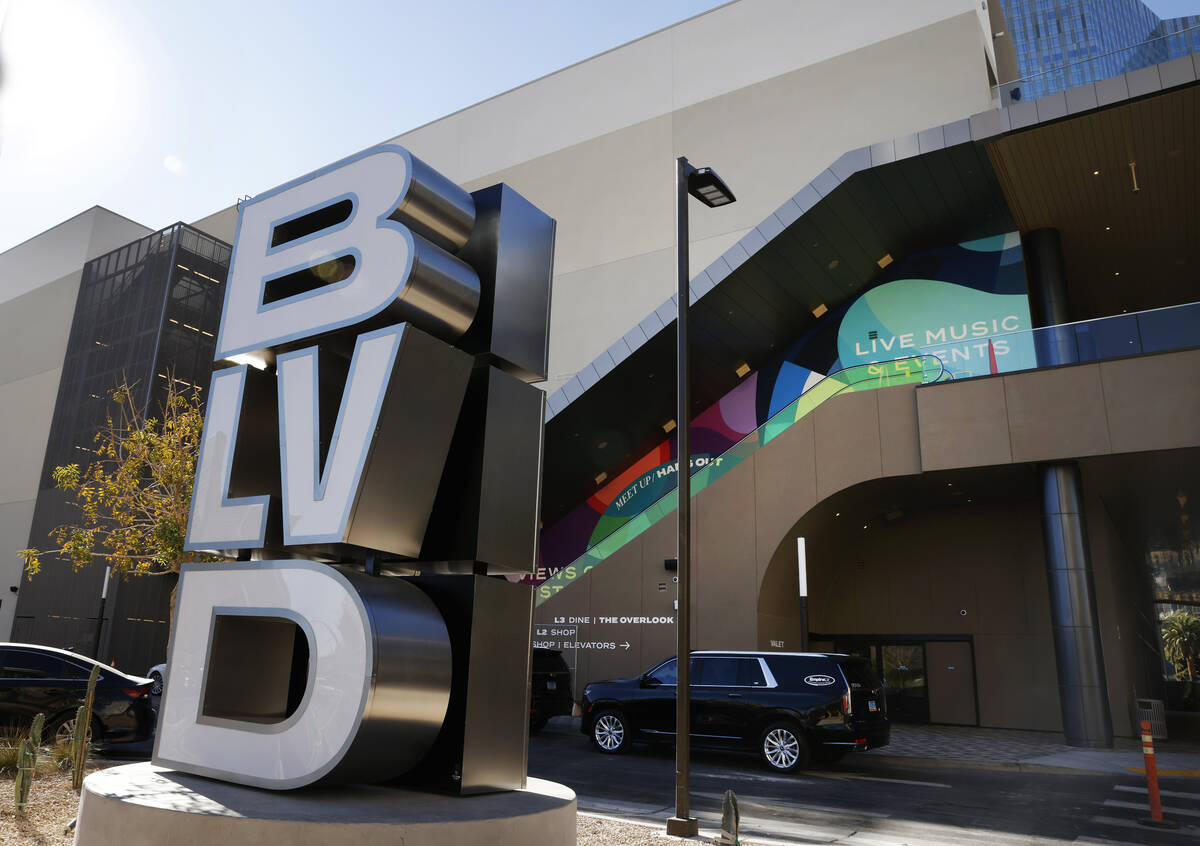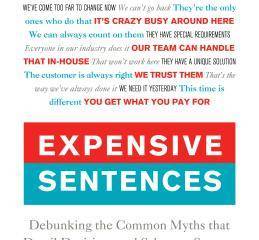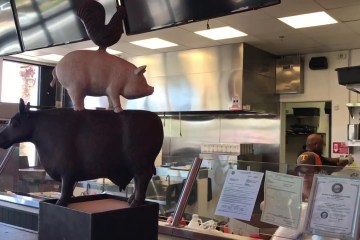The leasing agent for what’s expected to be the hottest new retail destination, entertainment and dining experience on the Las Vegas Strip in BLVD gave insight into the retail experience he expects in front of hotels on Las Vegas Boulevard in the future.
Michael Hirschfeld, vice chair of JLL, the leasing agent for the development project of Gindi Capital, talked about the retail landscape of Las Vegas and about his project to members of NAIOP Southern Nevada, the development organization. It recently hosted a program on “Strip Hospitality: What Makes a Winning Hand.”
Retail constantly evolves, and Hirschfeld said the Strip will evolve as well with every casino owner, with a Las Vegas Boulevard-facing property overlooking a fountain or another feature, will monetize that. That will make the Strip more walkable.
“We believe there’s 300,000 to 400,000 square feet of unsatisfied retail demand that is Strip-facing properties,” Hirschfeld said. “They will look unique and people will come up with amazing designs, and I do think they’re going to become a streetscape. Maybe the fountains and water features will be more internalized for the hotel guests then ‘let’s gather at 7 o’clock to watch the fountains.’ That is what you will probably see. It’s going to take a while but probably in the next five to 10 years.”
As for what else is coming in the future, Hirschfeld said he continues to see major entertainment venues that are tech centric — something in place now with the Sphere. He forecasts large concepts requiring 20 to 30 acres that will continue to reinforce “the global nature of Vegas” as a global draw rather than simply a domestic one.
“They are the types of things that right now you can build in Saudi Arabia because the (government) would fund it. That’s not where it has to be because that is a very limited way to do it. You are going to see it in a market like Vegas, and it’s going to be the next two cycles.”
BLVD, which is surrounded by hotels on the Strip, replaces the Hawaiian Marketplace with 400,000 square feet of space. Puma opened prior to the F1 race in November and others are soon to follow this spring and summer with such clients as Lululemon, Abercrombie & Fitch, JD Sports, Pandora, Adidas and H&M.
“We see that everybody wants to come to Las Vegas, and we get an awful lot of inquiries,” Hirschfeld said. “They want to come because they see the stats (of visitors to Las Vegas) but then they try to figure out how to operate in Las Vegas.”
Internationally, Hirschfeld said what they see right now is the three markets that any brand and tenant wants to know about: Miami, New York and Las Vegas. It’s no longer about San Francisco, Houston, Chicago and even Seattle which was part of the gateway market.
“You are down to three gateway markets,” Hirschfeld said.
“We had that coming out of the Asia Pacific and Middle East. There are so many restaurant concepts that are not yet in Vegas that would if they could figure it out. Once they get here and start looking, one of the things that confuses them is that seven to eight months of the year you have a day-and-a-half of business everyday compared to what they are used to. That changes their operating structure. That’s part of the stuff that makes them step back and figure it out because you can’t do the same thing.”
BLVD had brands everybody is familiar with but the experience in the store will be different, Hirschfeld said. It’s more about the psychographic of the people walking by.
It‘s street retail in its ultimate form except it has 35 million to 38 million people walking by — the second busiest street to Times Square in New York City.
“When you walk into (Puma five months after it opened) when most of the other retailers are open, you’ll see a different offering of product,” Hirschfeld said. “The retailer has to do that because if you walk into the store and it looks exactly the same as the last time you walked into the store, (that mirrors) one of the problems with mall retailing is you’re not going to be excited about it. I don’t necessarily love the word experiential, but every one of those stores at BLVD — the street-facing ones — they’re doing something different than they would do if they opened a store at Fashion Show Mall or Planet Hollywood.
“It’s a different product mix and staffing and engagement of what they want their staff to do,” Hirschfeld said. “While those brands want to sell as much merchandise as you can, if you just experience the Puma store and go buy the product back home or wherever you buy Puma. they’re perfectly OK with that. It’s factored into the value of that store. The value of that store is not only the people that walk by and 75 million people that drive by in cars. That combined 115 million people is twice the number of people that watched the second half of the Super Bowl. You can get on the Strip for $3 million or buy a Super Bowl ad for $8 million for 30 seconds. Our mix of tenants keeps it fresh, and we only have to maintain accessibility. Everybody will come to it.”
A great project starts with a great client, Hirschfeld said. Eli Gindi is a street retail developer who he said “just happens to be a gambler so he has spent a lot of time in Vegas.” He started by acquiring the BLVD site and those properties south of it, and Hirschfeld said when approached about being a leasing agent he turned it down three times before Ginti sent a rabbi to visit him before being convinced to do it.
“When I thought we were done, he called me and said he acquired the Smith & Wolansky property, and I said ‘great’ and what had 30,000 square feet now has 150,000 square feet on it. Then when I thought that was done he said he acquired 1 ½ acres on the Strip. That’s what Boulevard is.”
From the first charrett with architects and designers, everything was always about how to make this work as retail, Hirschfeld said. If you go to the back of the house, there are two full freight systems and a refrigerated trash room for all the restaurants on the roof. People wonder how you are going to get up and down, but everything was designed to serve retailers, he added.
“The lock down (from the pandemic) helped us a little bit,” Hirschfeld said. “That delay had some retailers thinking I don’t want all of my shops inside. It’s naive if you look back even four years that they’ll go back inside given the right project. At the time, a lot of the interest came our way, people wanted to look at alternatives.”
Looking at the Strip and what tenants get is storefronts that are 55-feet high, equivalent to a five-story building, Hirschfeld said.
“That’s a billboard,” he said. “In Times Square, you’re going to pay $5 million for that billboard. We don’t charge anything for the billboard. Our rent structures are unique in the way we priced it. It’s not priced per square foot. It’s actually priced per front foot. A 50-foot-wide storefront has a price associated with it. If you don’t want the full 200 feet of depth, and you want us to cut it off at 150 feet because you don’t think you can merchandize it, great. We will cut it off and the price is exactly the same. You’re buying the frontage.”
That’s something Hirschfeld said he’s done once in his career in the 1980s in downtown Manhattan on Nassau Street when Wall Street required huge numbers of employees. Everyday at lunch, hundreds of thousands would come out of their offices on Nassau Street and landlords started cutting their storefront down to six or seven feet and charging for front foot no matter the depth.
“We put it out there, and I know how tenants think,” Hirschfeld said. “They’re getting two floors with 10,000 feet each and a 50-foot front. They do the math based on 20,000 feet and go ‘wow that’s $3 million, $150 a foot. That’s a great deal.’ They get 35 million people. Times square gets 100 million. They pay $150 a foot blended. Times Square will cost you $1,500 a foot blended.”
Given non-disclosure agreements, Hirschfeld said he can’t talk much about what’s coming next but mentioned an Indian cuisine restaurant coming to the Strip.
“We have two major announcements that are forthcoming in the next 30 days,” Hirschfeld added. “Some people in this room know what it is. One is a major media commitment, and a three-floor 70,000 square-foot commitment. Our rooftop is entirely food and beverage, and they are actually doing a 17,000-square-foot food and beverage installation.”








